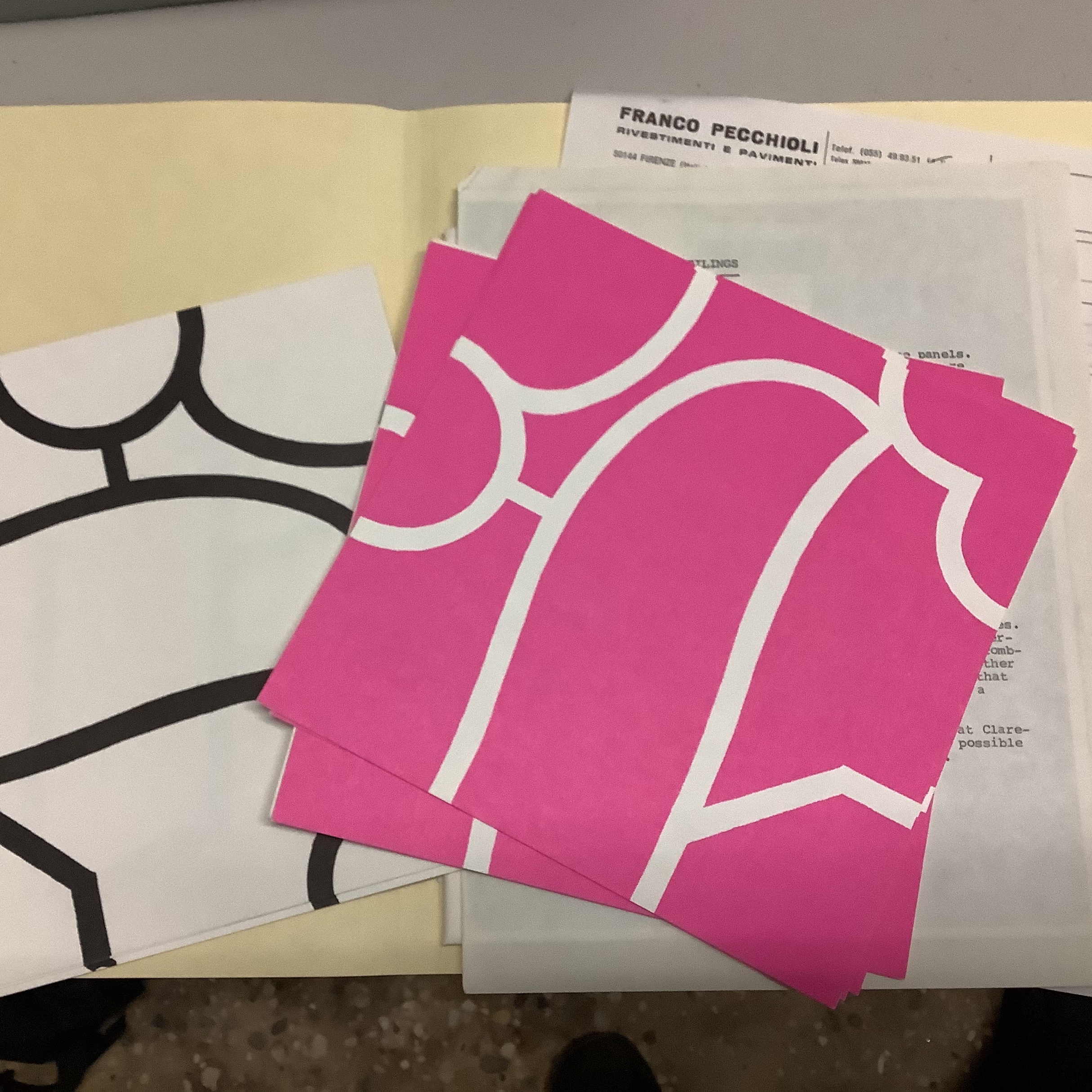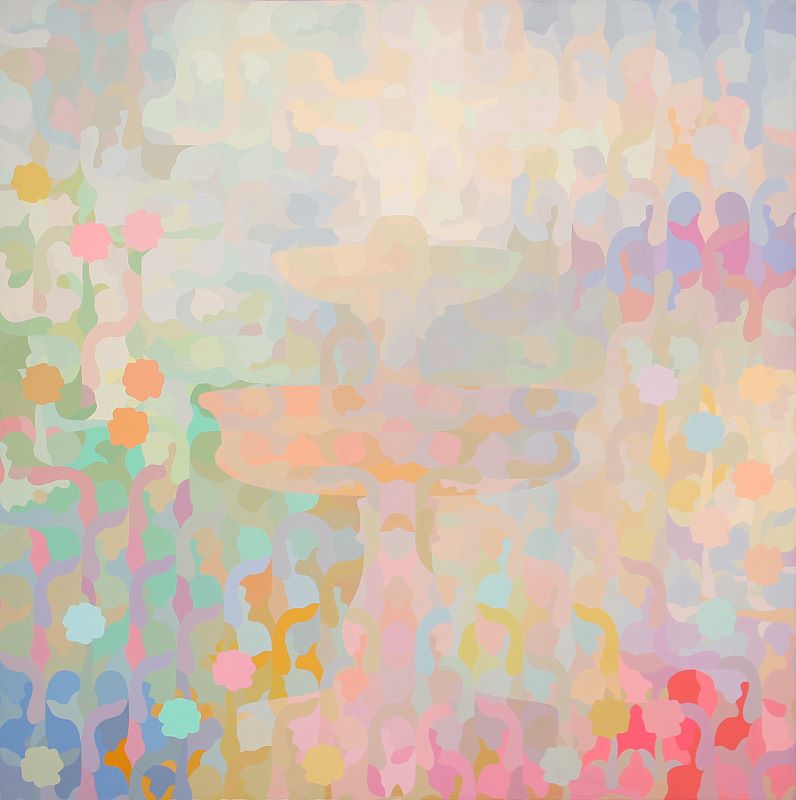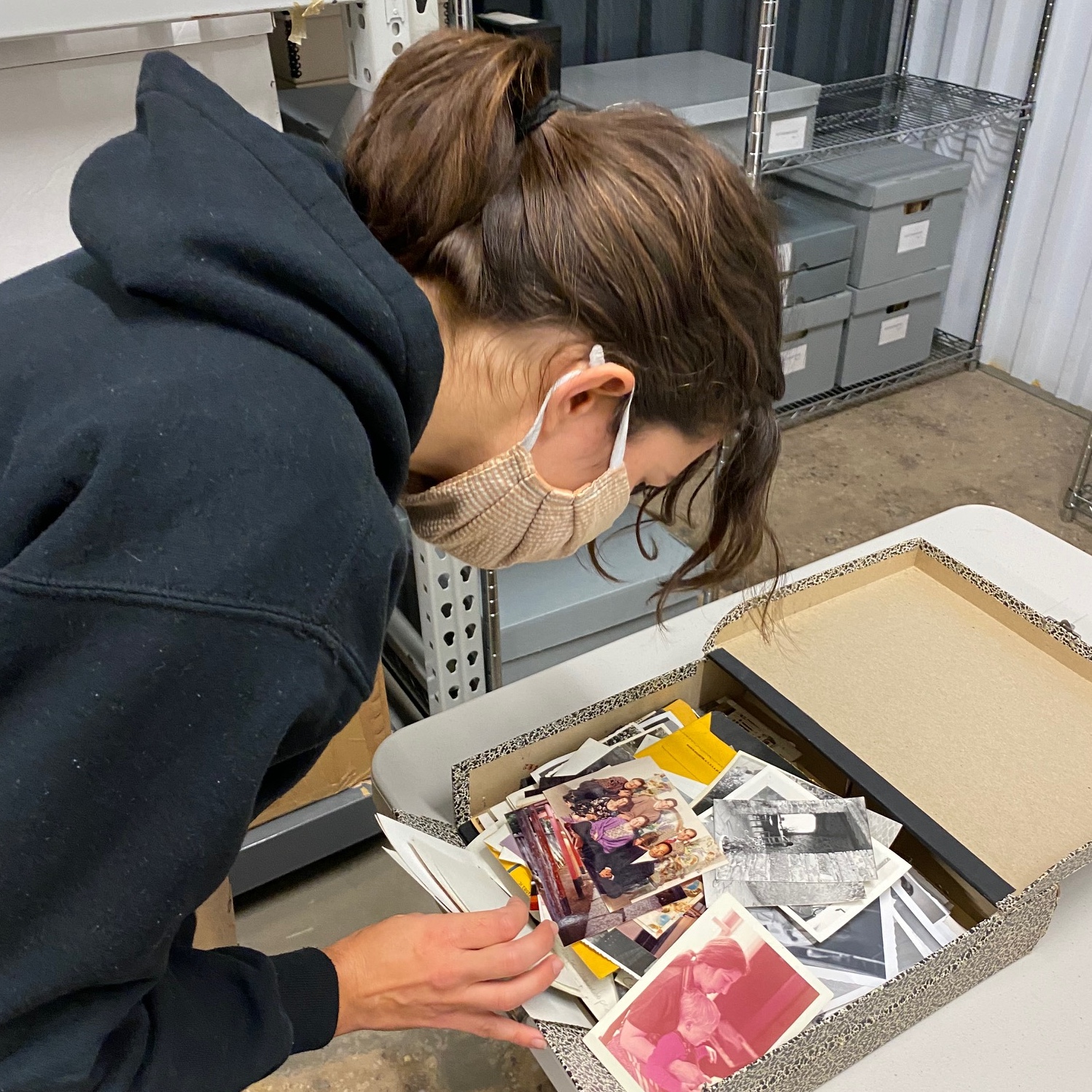Tags:
From the Archives


Betty Woodman first traveled to Italy in 1951, on the suggestion of her friends Grace and John Tagliabue who invited her to join them there. She spent the year in Fiesole, renting a room on a hillside overlooking Florence and its Duomo and working in a pottery studio owned by painter Giorgio Ferrero and sculptor Lionello Fallacara.
Read More

Although the Woodman Family Foundation archives are starting to take shape, there is still much more material to process before we are ready to open them up to scholars and researchers. Currently, we are processing George Woodman’s paper tiles and related plans, descriptions and documentation so that we can better understand this key aspect of his practice, which took his work with pattern off the canvas and into space and situation.
Read More

In the 1960s, Betty Woodman worked primarily in stoneware at her studio in Boulder, Colorado. At that time, she focused on producing functional ceramics, keeping careful notes about each piece.
Read More
Forty-one years ago, "19 Artists—Emergent Americans" was presented at the Solomon R. Guggenheim Museum in New York featuring seven paintings by George Woodman, among work by eighteen of his contemporaries including Barbara Kruger, Guy de Cointet, and Manny Farber. The exhibition reflected curator Peter Frank’s desire to present the artists’ work as a series of small retrospectives. “What I have sought to assemble at the Guggenheim Museum is the skilled and confident visual articulation of engrossing ideas by individuals who have not been sufficiently recognized for their accomplishment,” he wrote.
Read More

Molly McBride Jacobson, Archives Intern at the Woodman Family Foundation: "One of my projects has been inventorying, condensing, and rehousing Betty Woodman’s slide collection, which she used to document her work from the 1970s until the mid-2000s. She used this collection as a pre-digital database, arranging her slides by year and then separately by format."
Read More

In the summer of 1954, recent college graduate George Woodman set out from Boston towards Albuquerque, New Mexico. He had a degree in philosophy, and a desire to study painting in a more concentrated way than he had been able to do as an undergraduate student supplementing his Harvard education with art courses at the School of the Museum of Fine Arts Boston. He and Betty Woodman—who had been married just a year—followed this set of Triptik maps across the country, carefully tracking miles and expenses along the way until they arrived at the University of New Mexico.
Read More
In the early 1980s, as Betty Woodman moved into a New York City loft with her husband, George Woodman, and began to shift her functional practice towards ceramic sculpture, she became friends with many artists deeply involved with the Pattern and Decoration movement. She collaborated with two of them: Joyce Kozloff and Cynthia Carlson. With Kozloff, Woodman made ceramic forms—whether cups and saucers, pitchers or trays—which Kozloff then decorated with rich patterns inspired by Islamic tiles and motifs. The resulting works, which dissolve the line between craft and art, were shown in exhibitions at Tibor de Nagy Gallery and the Queens Museum in 1981.
Read MoreThe Woodman Family Foundation Archives include boxes and boxes of family photographs, spanning the early days George and Betty spent in Albuquerque where they welcomed their son Charlie into the world; to their move to a modernist home in Boulder—the site of many birthday parties, pottery sales, impromptu installations of paintings and Francesca’s earliest experiments with “dress up;” until just a few years ago enjoying breakfast with their grandson Alexander in both New York and Antella.
Read More

Beginning in the summer of 1968, the Woodman Family spent every summer at their stone farmhouse in Antella, Italy, just outside of Florence. As children, Charlie and Francesca joined their parents and later visited on their own, soaking in Italian culture and influences. Betty and George made some of their most important artistic breakthroughs there—a place George once described as "an artist residency for two.” All summer long, their garden produced abundant food and flowers—the tomatoes were particularly good in August, happily shared with frequent visitors.
Read MoreLast week was an exciting one at the Woodman Family Foundation. Upon their long-awaited return to New York, we were treated to a room full of George Woodman’s paintings. And wow we were bowled over by how fresh and contemporary these paintings feel, despite the fact that they were made some 50 years ago. We were struck by the subtle and shifting interplay of color and pattern and the raw intelligence of George's approach, which are slowly revealed over the course of a lingering look. What a pleasure to see these ambitious and original works in person.
Read More

On occasion, Betty Woodman translated her abiding interest in the subject of function into materials other than clay, always pushing the possibilities of a particular medium. In 1999, she began an ongoing collaboration with Fonderia Artistica Belfiore in Pietrasanta, Italy, an idea which came from a conversation with her longtime gallerist, Max Protetch and was in part inspired by fellow gallery artist Scott Burton’s sculptural furniture, as well as the formal Italian gardens she had spent decades exploring.
Read More

In the fall of 1982, the exhibition “Partitions” at Pratt Manhattan Center Gallery featured the work of 15 artists—including George Woodman—concerned with contemporary interpretations of screens. As hybrid sculptural, decorative, functional objects, partitions and interest in them were a kind of corollary to the burgeoning Pattern and Decoration Movement, and described by critic John Perreault, who wrote the exhibition’s essay, as “ubiquitous,” “a phenomenon,” and “a challenge to some preconceptions about art."
Read More





.jpg)





















































